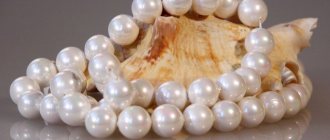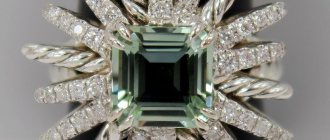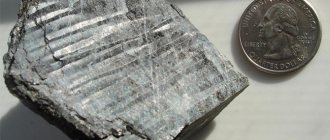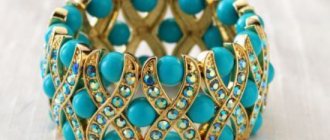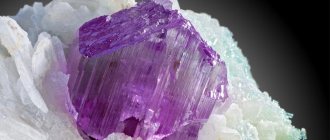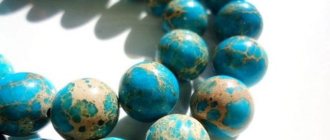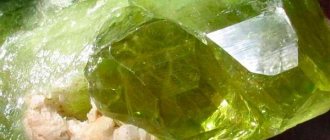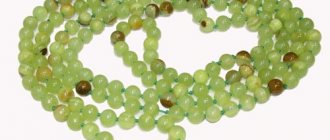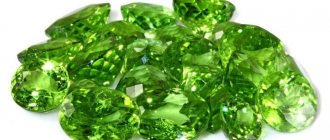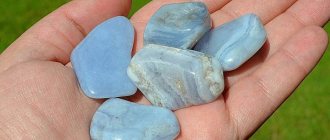- Which: Semi-precious;
- Place of Birth: -;
- Colors: Black, green, white, blue or red.;
- Mohs hardness: 7.5-8.5;
- Transparency: Transparent or translucent;
- Density: 6.5-10 g/cm3;
- Formula: Zr0.8Ca0.2O1.92;
- Suitable person according to zodiac sign: Everyone;
- How much does it cost: from 1 dollar per gram.
The limitation of natural resources has led humanity to the creation of their synthetic analogues. Scientific developments and jewelry making were not spared.
In 1968, an artificial double of the diamond was developed - the cubic zirconia stone. Its similarity to the precious standard has given rise to many fraudulent schemes, which has provoked a negative attitude towards the valuable scientific invention.
History of invention
The artificial stone owes its name to the Physical Institute of the Lebedev Academy of Sciences (FIAN), where it was created. Initially, the goal of the research was to obtain a material with certain optical properties necessary for laser equipment.
But already in the early 70s of the last century, cubic zirconia caused panic in foreign jewelry markets: a stone almost identical to a diamond cost a penny. In the 1990s alone, crystals with a total weight of 50,000,000 carats were produced worldwide. Since then, production rates have only increased.
History and origin of the stone
Cubic zirconia was invented in 1968 in the USSR. Physicists have been working to create optical lenses that would improve laser refraction. As a result of the experiments, a stone was obtained that looked very similar to a diamond.
He never completed his task, but the employees liked him. They sorted out the remains of the gems as souvenirs.
Soon the gems were brought to marketable condition and began to be supplied to the West. At first the Europeans were delighted with the cheap “diamonds”, but very soon they realized that they had been fooled. The story was hushed up, although a residue remained.
For this reason, the name “cubic zirconia” is popular only in Russia. Other countries are very reluctant to recognize the authorship of the USSR and more often call the stones by less common names:
- jevalit;
- Shelby;
- cubic zirconia;
- Deymanskvar.
In our jewelry stores you can also often find gems with this marking. This suggests that the cubic zirconias are most likely imported.
To see what the stone looks like:
Confusion in terminology
The term “cubic zirconia” is used only in the CIS countries and Eastern Europe.
In the global jewelry community, other names are used to describe the insert in a product:
- jewellite;
- zirconite;
- daimonsquay.
Cubic zirconia is incorrectly called zirconium. Zirconium is a metal, and only its cubic dioxide has a crystal structure.
In addition, there is zircon, a natural semi-precious stone. A mineral of igneous origin is several times more expensive than cubic zirconia.
Cubic zirconia is also often confused with Swarovski crystals, which are a proprietary type of crystal.
Areas of application
Ring 925 silver, cubic zirconia Cubic
zirconia is often used in jewelry. Gold jewelry can be decorated with cubic zirconia inserts. They are also used to contrast the transparency or color of the main insert (the center of the composition), and as an imitation of diamonds.
In addition, they are used in dentistry, ceramic spraying, and the chemical industry.
How:
- in optics - in the manufacture of lenses for equipment;
- in dentistry - to create so-called dental ceramics;
- in medicine - part of medical scalpels.
Appearance and color options
Cubic zirconium dioxide is colorless, but technology allows it to be given in more than 40 different shades.
Most Popular:
- yellow;
- pink;
- green;
- purple;
- brown with a golden tint.
In addition, a color changing effect is possible, allowing you to imitate rare and very expensive alexandrite. At the same time, scientists still cannot obtain cubic zirconia of emerald green color.
Color varieties
Cubic zirconias are:
- colorless;
- colored.
The classic version is a colorless, transparent stone. Dyes are added to make it look like other precious gems. In this case, the colors of cubic zirconia are varied.
Table of main dyes:
| Element – dye | Color |
| Cerium | Red Yellow |
| Titanium | Brown |
| Chromium | Green |
| Aluminum, cobalt | Light blue, blue |
| Erbium | Pink |
Saturation depends on the mass of the dye. The larger the volume of the additional element, the deeper the color. Jewelers take advantage of the developments and create jewelry with artificial sapphires, garnets, amethysts, chrysolites, etc.
Carefully!
If you purchase a product at a low price and the sellers claim that it is a jewel, be wary! Most likely, this is a skillful fake.
Precious or not?
Cubic zirconia enchants with its excellent play of light and perfect purity. In appearance, it is in no way inferior to precious stones and is difficult to distinguish from a diamond. Cubic zirconias are widely used in jewelry and make it possible to create real masterpieces, each of which has considerable value. All this leads to the question, is cubic zirconia a gemstone or not?
Cubic zirconia is often called an artificial diamond. But its origin and low cost of production devalue the magnificent appearance of the crystal - it is not at all rare. This means that cubic zirconia cannot be a precious stone.
Price
Cubic zirconia is not a precious stone, as it is not at all rare. Its price is quite affordable for most people.
The cost of jewelry with cubic zirconia depends on:
- stone quality;
- values of metal for the frame.
On the global jewelry market, the average price of cubic zirconia per 1 gram is:
- small colorless or transparent crystals - 0,5 $;
- colored, similar to precious stones - $1-3 (if similar to ruby, sapphire and blue topaz - twice as expensive);
- large, multi-colored, and also imitating diamond placers - 3–5 $.
Examples of prices for jewelry with cubic zirconia in Russian online stores:
- silver earrings (925 sterling silver) — RUB 2,790. ;
- silver bracelet (925 sterling silver) — RUB 3,990. ;
- earrings made of gold with green cubic zirconia (gold purity 585) - RUB 6,350. ;
- gold ring (gold purity 585) - RUB 9,830. ;
- gold pendant with green and blue cubic zirconia (gold purity 585) - RUB 12,890.
How to distinguish cubic zirconia from a diamond?
The similarity of cubic zirconia with a diamond has led to it being used as a counterfeit of its precious “brother,” but there are several ways to help distinguish them:
- Crystal purity. Cubic zirconia can only imitate a diamond of very good quality, without internal cracks or defects. Precious stones of perfect purity, especially large ones, are quite rare in nature. So if you see an inexpensive crystal with absolutely no flaws, it means it is cubic zirconia.
- Quality of cut. Upon closer examination through a magnifying glass or microscope, you can notice that cubic zirconia crystals have blurred and double edges. However, if the fake is of good quality, the cutting can also be performed at the highest level.
- Dirt-repellent properties. If you drop a little oil on the surface of a diamond, it will easily flow down the surface. Imitation tends to accumulate dust, grease and dirt, which is why it loses its shine over time.
- Weight of the stone. Zirconium dioxide has a higher density than diamond. Two stones of the same size can be weighed: the one that turns out to be lighter is the diamond. True, this method is difficult to implement if the crystals are fixed in the product.
- Hardness. Diamond is the hardest of all minerals; it can cut glass, but imitation will only leave a mark on the surface. In addition, a diamond can scratch cubic zirconia, but cubic zirconia cannot scratch a diamond.
- Thermal conductivity. A natural stone can be recognized by pressing it to the cheek - the surface of the mineral almost always remains cold. More accurate identification is provided by diamond testers - devices that determine the thermal conductivity of a stone, and based on the obtained values, they can easily recognize an imitation.
Unfortunately, there are such skillful fakes that none of the above methods gives complete confidence in the authenticity of the diamond. An expert opinion and certificate for a stone can only be issued by a gemological laboratory.
Physical and chemical properties
Cubic zirconia is an artificial gem obtained in a laboratory using a melt of zirconium dioxide. To add stability to the material, the chemical composition during the synthesis process is supplemented with oxides of calcium, manganese and yttrium. The result is a colorless, highly shiny crystal that looks like a diamond, is not fragile, less hard (7.5 versus 10 for a diamond), but more dense (6.5-10 versus 3.5 for a diamond).
| Formula | Zr0.8Ca0.2O1.92 |
| Color | Colorless like diamond, pink, red, green, yellow, brown, black, purple, multicolor |
| Shine | Diamond |
| Hardness | 7,5-8,5 |
| Transparency | Most often transparent and translucent, but opaque may also occur. |
| Cleavage | Absent |
| Strength | non-fragile |
| Kink | Uneven |
| Density | 6.5-10 g/cm3 |
| singonia | Cubic |
| Refractive index | 2.15-2.25 (close to diamond) |
| Additives (impurities) | Copper, titanium, erbium, neodymium, cerium, Nchrome and others |
| Dispersion | 0,06 |
| Naturalness | Artificial (grows at a speed of 8-10 millimeters per hour) |
The physical properties and low cost of cubic zirconia made it possible to use them in various areas of human life and activity - the chemical industry, medicine, dentistry and others.
Who is suitable according to their zodiac sign?
It is generally accepted that cubic zirconias are suitable for almost all zodiac signs. Before purchasing, try to listen to your own intuition - it will help you choose a stone that matches your inner self.
In addition, there are recommendations on how to choose the shade of a stone according to your horoscope:
- Capricorn. For people born under the sign of Capricorn, stones of dark colors are recommended - rich green, gray and even black. Such shades are combined with their pragmatism and gloomy character. But muted colors do not enhance the gloominess of their owner, but, on the contrary, allow one to consider one’s own positive traits.
- Aquarius. Aquarius, like other signs belonging to the element of Air, is characterized by lightness and frivolity. These character traits are best emphasized by transparent, light blue stones. For a girl born under this sign, we can recommend platinum or silver earrings with such an insert as an ideal decoration.
- Fish. People born under the sign of Pisces are suited to all shades of stones reminiscent of the sea - blue, green, turquoise. Even a simple ring with a central cubic zirconia of this color can become a talisman for them, protecting them from the “evil eye” and envious people.
- Aries. If you decide to buy Aries jewelry with a cubic zirconia insert, pay attention to warm, rich colors - green and yellow. They have a calming effect, which is so necessary for overly hot-tempered representatives of the element of Fire. The hardness of their character also goes well with the hardness of cubic zirconia.
- Calf. Taurus is a zodiac sign with a soft, calm, sentimental disposition. If you give him the opportunity to choose a stone on his own, he will certainly choose yellow, green, and brown colors. They harmoniously combine with his inner “I” and give confidence in his own abilities.
- Twins. For Gemini, the ideal stone would be amethyst. It is able to express the inclination of this zodiac sign to everything mystical and mysterious, improve intuition, and also protect its owner from ill-wishers. For daily wear, amethyst can be replaced with purple cubic zirconia.
- Cancer. Cancer is one of the most sensitive signs of the zodiac. He needs strong protective amulets, especially those made of silver. Transparent or blue cubic zirconia would be appropriate as inserts. Stones of these shades promote high mental activity and protect against diseases.
- A lion. Those who love attention and bright colors - Leos - are recommended to wear jewelry with rubies and garnets. This zodiac sign is a bright representative of the element of Fire, and its powerful energy can be enhanced with red or pink stones, including cubic zirconia. Such crystals will look especially good in a gold frame.
- Virgo. Virgos are a zodiac sign with a complex character. He is characterized by pragmatism, accuracy and mysticism at the same time. To emphasize these properties, Virgos are recommended to wear stones in white, green and lavender shades.
- Scales. Libra is a sign of the Zodiac, prone to inconstancy everywhere and in everything. Turquoise or dark blue stones can evoke a sense of peace of mind and calm the nervous system. The only exception is Libra, born from October 14 to 23: astrologers recommend that they wear exclusively natural stones.
- Scorpion. The patron of this sign is Mars, which gives Scorpios irrepressible energy. Talisman stones that can strengthen it are dark red garnet, tourmaline, ruby or similar cubic zirconia. They have a beneficial effect on the functioning of the cardiovascular system and also bring good luck in love. In addition, Scorpio is impressed by crystals with a color-changing effect, which have the same strong energy as himself.
- Sagittarius. As a true representative of the element of Fire, Sagittarius is capable of a flurry of emotions and feelings. But his energy must be directed in a creative direction. This is facilitated by stones of all shades of blue - from soft blue to cornflower blue, reminiscent of Kashmir sapphire.
Cubic zirconia does not have any regulations or restrictions regarding the names of its owners.
Magic properties
Unlike natural minerals, cubic zirconia initially does not carry any energy - neither positive nor negative.
It has no defects, cracks, and is perfectly transparent. It is a clean vessel that needs to be filled. The magical properties that cubic zirconia will have depend on its owner. The crystal is able to remember any emotions, thoughts, events. It can be turned into your own amulet if you wear it at moments of success and achievements in life.
At the same time, the stone cannot be given into the wrong hands, even temporarily. If you were given a product with cubic zirconia that has already been used, you need to carry out a cleansing procedure: put it in a vessel with spring water or hold it over a flame.
Cubic zirconia is called the stone of loneliness. He is forced to constantly be in the shadow of his “big brothers” - precious and semi-precious stones, to act as an imitation and counterfeit. Some esotericists believe that he personifies duplicity and falsehood, but this is not so.
The damaged reputation of cubic zirconia is a consequence of human actions aimed at easily making a profit by deception.
Cubic zirconia brings good luck:
- travelers;
- careerists;
- scientists;
- any lonely people.
It helps to do a large amount of work in a short time and has a beneficial effect on the overall tone of the body. At the same time, synthetic imitation diamonds are not recommended for people with clear leadership qualities.
The healing properties of cubic zirconia stone
The mineral has a positive effect on health and immunity. Among the medicinal properties of cubic zirconia stone, the following are worth highlighting:
- increases vitality;
- restores the body;
- saturates a person with positive energy.
Cubic zirconia helps replenish strength after long and serious illnesses. It helps you return to your normal life. It is believed that he is capable of setting up a complex operation. Thanks to the mineral, a person does not give up, does not give up and believes in healing.
What stones does it go with?
A laboratory-grown crystal can be combined with any natural stones. From a decorative point of view, the most versatile is colorless cubic zirconia - it sits well alongside transparent topazes, amethysts, citrines, and garnets. Surrounded by small cubic zirconias, each of these stones will shine brighter.
The proximity to cubic zirconia also enhances the energetic impact of natural minerals. Any piece of jewelry that combines a precious stone and an artificial one will be a powerful talisman. It must be worn with caution.
How to wear
Jewelry with cubic zirconia can be worn at any time: silver is appropriate during the day and at work, and gold or platinum is appropriate in the evening and for special occasions.
Pink stones in earrings or a pendant are suitable for girls.
The severity of a business suit will be softened by a brooch with a multicolor crystal.
For men, a signet with a black gem, framed in platinum, white gold or steel, is suitable.
The product can be precious or costume jewelry, depending on the metal of the frame.
Costume jewelry is more suitable for young people - these are crystals framed with cupronickel, steel or jewelry alloy.
Cubic zirconia looks beautiful in a rhodium-plated frame: its shine becomes stronger and more noble.
A white stone looks good set in any shade of gold.
When choosing jewelry, you should consider the following:
- a single large cubic zirconia in decoration will emphasize the sophistication of the owner;
- if the product contains a large precious gem, then small cubic zirconias will make the jewelry original and it will look more expensive.
Jewelry
Availability and wide range of colors have ensured cubic zirconia's high popularity in jewelry. Artificial stone is found in products made of silver, gold, and platinum.
It can favorably set off the central gem in a carmesine frame or even sit next to a diamond - however, the latter combination is considered unethical.
However, cubic zirconia allows you to create jewelry of high artistic value, comparable to works of art.
This is an excellent educational material for novice jewelers, which is easy to purchase at hardware stores. The synthetic analogue gives everyone the opportunity to buy bold, stylish, unusual products or restore their favorite jewelry for a low fee.
Talismans, amulets, amulets
Cubic zirconia
earrings Charms with artificial mineral are common, again due to availability. Keep in mind that the meaning of a talisman with a cubic zirconia stone depends primarily on the color.
- Blue is a symbol of creative people and promotes the discovery of talents.
- Black - suitable for business people. They are responsible for ingenuity, acumen, and prudence.
- Green will help an embittered person. This stone softens your temper. In addition, the amulet will be useful for those who want to feel unity with nature.
- The colorless stone is a symbol of honesty and openness. The mineral set in silver is a suitable talisman for innocent brides.
- The yellow look is suitable for unhappy people. It will absorb sorrows and help cope with life's disappointments.
- The blue mineral helps the owner achieve his goals.
- Charms with the pink variety are a suitable talisman for women. This gem is responsible for attractiveness, femininity, and personal happiness.
Artificial analogues bring success, help on a long journey and give the owner optimism.
Charms with cubic zirconia
The ability to accumulate and multiply energy makes it possible to use the crystal to create various amulets.
The most common of them:
- horseshoe;
- scooping spoon;
- Tibetan knot of happiness;
- Four-leaf clover;
- star of Erzgamma.
There are also pagan amulets with cubic zirconia inserts. Thanks to crystals, their protective effect is enhanced.
Production and material processing
In the production of gems, Soviet manufacturing technology is used. At that time, scientists were not limited in the use of resources.
Now this method has many disadvantages in market conditions. Therefore, other countries are trying their best to simplify production, but in this case the gems are far from original.
Gems are obtained by high-frequency melting. The method consists of the following steps:
- The raw materials are loaded into the container.
- The high-frequency generator uses its energy to melt its contents.
- The water circulating in the pipes prevents the temperature from rising above 25 °C. Therefore, the surface of the stone remains cool.
- The melt is cooled.
- Crystals up to 2 cm in diameter are extracted from the core.
Production happens quite quickly. Gems grow up to 1 cm per hour.
The cheapest of them are colorless stones. Colored ones include various impurities, and accordingly their price is higher.
Synthetic gems are most often cut to look like diamonds. But cubic zirconia has more rounded edges and their number is usually less than 57.
Care
Products with cubic zirconia should be wiped with a damp cloth and protected from exposure to cosmetics and chlorine. It is better to remove such jewelry while doing housework.
To extend the life of the stone, it is worth protecting it from possible scratches and mechanical damage. It is advisable to store jewelry in a closed case.
How to care
Artificial stones in jewelry quickly lose their luster without proper care. There are various ways to restore it:
- use a jewelry cleaning solution;
- soak in a weak soap solution, then rinse with clean water;
- Apply toothpaste to the stone, then remove it with a cotton pad.
Periodically, products with stone should be wiped with a damp soft cloth.
They should be put on after applying makeup. Before cleaning, going to the shower, or swimming pool, decorations must be removed.
It is better to store cubic zirconia in a box to protect it from damage (it is easily scratched and chips appear from impacts).
It should be taken into account that the bright sun gives the stone a greenish-yellow tint.
Over time, cubic zirconia experiences the effect of optical degradation—that is, “clouds” appear in the crystal.
